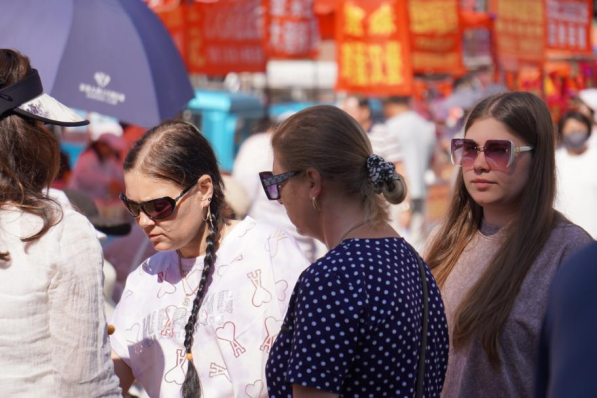Port city revives past glories


Reviving ancient links
Quanzhou was the largest port in China from the Song Dynasty to the Yuan Dynasty (1271-1368), when the country shipped ceramics, tea and other products via ports along its southeast coastal route to Southeast Asia, the Middle East and Europe.
Ceramics and tea remain integral parts of the city's exports today, especially countries taking part in the BRI. Ceramics produced in Dehua, another county administered by Quanzhou, are exported to more than 190 countries and regions. The total volume of ceramic exports to BRI countries reached $43.5 million last year, up by 29.8 percent year-on-year, according to Dehua government statistics.
Zheng Pengfei, general manager of Shunmei Group, a major ceramics producer in Dehua, said countries along the 21st Century Maritime Silk Road constitute a major market for its products. The BRI has helped the company expand its circle of contacts and business opportunities, Zheng said.
"The reason for the lasting popularity of our products lies in our understanding of the cultures of different countries. We've received more clients from BRI countries in recent years, and we've had closer exchanges with our clients," he said.
Wu Rongshan, chairman of Sanhe Group, a tea producer based in Anxi county, said the company is investing 20 million yuan a year to promote tea culture in Europe.
The company has already established tea culture societies in universities in Rome, Venice and Lyons. It is eying cooperation with coffee shops to further promote its products.
Renowned for its deepwater ports, Quanzhou has boosted its maritime transportation links in recent years. Last year, its ports registered total cargo transportation volume of 3.74 million metric tons, up 3.77 percent year-on-year, according to official statistics.
Wei Changhua, a manager at Quanzhou Pacific Container, said Shihu Port in Shishi, which is managed by the company, has prioritized the development of shipping routes to a number of countries in Southeast Asia in recent years as part of efforts to expand the shipping network to countries involved in the BRI.
Exports from the port, such as textiles, shoes, handicrafts and frozen fish, enjoy huge popularity in the Southeast Asian market, and the port will expand its anchorage space to accommodate expanding cargo imports and exports, he said.
Wei noted that a majority of shipping companies operating from Shihu were family businesses.
"We are only looking to boost our trade volume and revive the glories of the past," he said.
- China launches first national standard on school meal services
- China's nano 'two-photon factory' sets world record
- Low-altitude transit route links Shanghai, Jiangsu
- Shanghai-Hong Kong Youth Choir Festival launches
- Chinese courts step up efforts to safeguard stability
- Former tech group executive sentenced for bribery





































